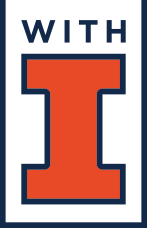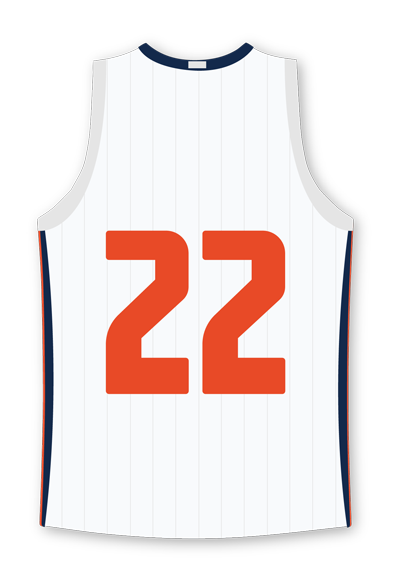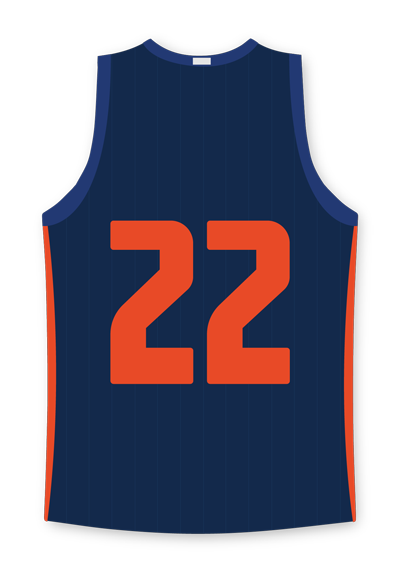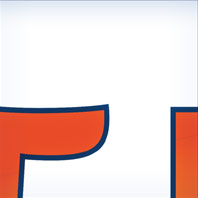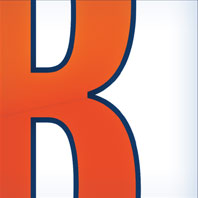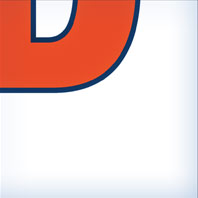The impact our faculty and alumni have made on the world is undeniable and indelible. And while campus has changed over the last 150 years, your generosity and our commitment to progress and innovation hasn't.
From the day we were founded, we have insisted the world redefine the word impossible.
1860s
The Old University Building, also known as 'The Elephant.'
A child of the Morrill Act, the University of Illinois began life in 1867 as the Illinois Industrial University. The school's radical mission was to extend higher education to members of the working-class. One year later, we opened our doors with four faculty members.
Today, more than 300 faculty members throughout the university are honored with named faculty positions supported by private philanthropy.
1870s
This class gift served as the keystone above the doorway to University Hall, which was torn down in 1938.
In 1872, the first graduating class of the university left a class memorial gift—a bronze medallion inset in a stone tablet. Since then, graduating classes have contributed to the Altgeld bells, the Alma Mater, the Diana Fountain outside the Union, and more. Alumni have shown their support for our university from the beginning and continue today. To date, over 63,182 alumni have given during the With Illinois campaign.
1880s
Carlos Montezuma, Class of 1884 president.
Since early in its inception, the university has imperfectly attempted to address social and racial inequality. While the university's earliest students were mostly white, of European descent, and Protestant, a number of pioneering students have broken barriers to become Illini.
Among the students enrolled in the 1880s are two of these pioneers: Carlos Montezuma and Jonathan Rogan. Montezuma was elected president of the Class of 1884. A member of the Yavapai Tribe, Carlos' birth name was Wassaja, and in 2016, a new residence hall was named in his honor. After graduation, he became a physician and advocate for Native American rights. Rogan, a civil engineering major who enrolled in 1887, was the first Black student on campus. Over the decades, students have fought for representation in movements for suffrage, peace, civil rights, LGBTQ+ rights, and Black Lives Matter, among others.
In 2019, we established the Office of the Vice Chancellor for Diversity, Equity & Inclusion to formalize and organize our commitment to being a more inclusive campus that is open, just, and welcoming for all.
1890s
Katherine L. Sharp founded the university's library science program, now the iSchool, in 1897.
In 1897, the Department of Library Science at the Armour Institute in Chicago was moved to Urbana and renamed the Illinois State Library School. Katherine L. Sharp served as head of the department and University Librarian.
Now named the iSchool, this prestigious college has just added an undergraduate degree. Donors have made possible the continued excellence of the program, and the Katherine L. Sharp Legacy Society recognizes alumni and friends who have included a gift for the School in their estate plans.
1900s
Click or slide left/right to see the Natural History Building from the turn of the 20th century and present day.
As the world entered a new century, Illinois entered a new era of growth. During this time, University President Edmund James oversaw the creation of the Graduate College, the awarding of our first PhD, the expansion of the Library from 66,000 volumes to 420,000 volumes, and the installation of a campus plan for future building projects. The Natural History Building (pictured above), one of campus' original structures completed in 1892, underwent renovations in 1909 and 1910 to add a lecture hall and a museum. At the time, it was home to the departments of botany, entomology, zoology, physiology, geology, and mathematics.
In 2017, more than one hundred years later, a $78 million renovation, made possible in part through philanthropic gifts, restored its beauty and outfitted it for today's learning environment.
1910s
Click or slide left/right to see business students in 1912 and 2019.
The university continued growing in this decade and even celebrated its first Homecoming in 1910 with more than 1,500 graduates returning to campus to watch the Illini beat Chicago 3-0. Ground broke on the first women's residence hall, the College of Liberal Arts & Sciences was created, and College of Commerce and Business Administration was established.
The business school would later be renamed the Gies College of Business in 2017 in honor of alumnus Larry Gies and his wife, alumna Beth Gies, and in recognition of their $150 million gift—the largest single gift in the university's history.
1920s
Click or slide left/right to see Engineering Hall when William W. Grainger was a student and today.
Reeling from the war and the outbreak of influenza, students ushered in the Jazz Age by coming to campus in record numbers, making it the first time over 10,000 students were enrolled. Red Grange galloped into history, the Altgeld Chimes were installed, and the Alma Mater was dedicated. The engineering program continued to shine—in fact, Professor J.T. Tykociner, one in a long line of pioneering engineers at Illinois, was the first to put sound to film in 1921, creating the "talkie."
One hundred years later, during the With Illinois campaign, the Grainger College of Engineering was renamed in honor of another successful graduate, William W. Grainger, in recognition of a $100 million gift from The Grainger Foundation.
1930s
Click or slide left/right to see the auditorium when Helene Foellinger was a student and now.
The Depression was devastating for the campus community as it was across the world. Enrollment declined, building projects paused, and even the Altgeld Chimes went quiet as campus could no longer pay anyone to play them. During this era, Helene Foellinger (LAS '32) graduated and launched her career in journalism, ultimately becoming publisher of the Fort Wayne News-Sentinel.
Helene was also a philanthropist, running the Foellinger Foundation with her mother, Esther. In the 1980s, her $3.8 million gift restored the Foellinger Auditorium, which was then named in her honor.
1940s
Click or slide left/right to see Tim Nugent coaching the team in 1948 and Coach Matt Buchi (AHS '08) at the national championships in 2019.
In the 1940s, Tim Nugent emerged as a pioneer who created opportunities for students with disabilities, many of whom were returning veterans of World War II. Today, the university is known around the world as an inclusive and innovative campus and the home of many firsts, including groundbreaking work in accessible architectural design, bus service, and student housing. One disability rights activist, Fred Fay, described the program as "the birthplace of what we now call the disability rights movement."
The College of Applied Health Sciences is now offering a new master's degree program in health technology and established the Center on Health, Aging, and Disability, which includes the McKechnie Family LIFE Home, a research space dedicated to innovating around autonomous living and supported by philanthropic giving.
Did you know? There are 932 donors to the With Illinois Campaign who graduated during the 1940s.
1950s
Click or slide left/right left/right to see Altgeld Hall under construction in the 1950s and now.
After the war, students found many ways to celebrate. They hosted Tuesday square dances, coffee and jazz nights, and hops and couples' nights on the weekends. During this decade, the Law Building and Bevier Hall were both dedicated, our astronomers were the first to track and publish the orbit of Russian satellite Sputnik I, and the Fighting Illini celebrated a Rose Bowl victory. Also, College of Education professor and Uni High teacher Max Beberman founded "new mathematics," a method of teaching that went beyond rote learning. In 1956, the Department of Mathematics made Altgeld Hall (pictured above) their permanent home. The final addition, constructed in 1956-57, created classrooms along the building's east side.
Today, the With Illinois campaign is helping fund another renovation for Altgeld, a $100 million project that will restore and modernize this iconic campus building.
Did you know? There are 3,921 donors to the With Illinois Campaign who graduated during the 1950s.
1960s
Click or slide left/right to see Assembly Hall under construction and the renamed State Farm Center today.
During the 1960s many sit-ins, protests, and vigils were held on campus as the nation grappled with controversy over the Vietnam War, the Civil Rights Movement, and the assassinations of JFK and Martin Luther King, Jr. Also during this time, construction was completed on the Undergraduate Library, Krannert Center for the Performing Arts, and Assembly Hall (seen above).
Fans have always loved Fighting Illini basketball and in 2013, a $60 million naming rights agreement renamed the home of this beloved program, State Farm Center. Today, donors are raising funds to renovate the Ubben Basketball Practice Facility, adding more than double the amount of space for players to practice.
Did you know? There are 8,455 donors to the With Illinois Campaign who graduated during the 1960s.
1970s
Click or slide left/right to see Carl Woese in 1976 and a photo of the Carl R. Woese Institute for Genomic Biology today. (photo of Carl Woese courtesy of Ken Luehrsen).
In 1977, microbiology professor Carl Woese and his colleagues overturned a universally held assumption about the basic structure of the tree of life. They discovered that there were three distinct branches, or "domains," of life—not two, as had been previously thought. The new class of organisms they discovered looked superficially like bacteria, but their evolutionary history was completely different. These microbes are now known as archaea and are genetically and evolutionarily as distinct from bacteria as plants and animals are.
In 2015, the University of Illinois' Institute for Genomic Biology was renamed in honor of Woese, who changed the course of science with his discovery of a third major branch of the tree of life.
Did you know? There are 13,386 donors to the With Illinois Campaign who graduated during the 1970s.
1980s
Click or slide left/right to see The Beckman Institute under construction and today.
When University of Illinois alumnus Arnold Beckman (GRAINGER '22, '23) and Professor Ted Brown dreamed up the concept of the Beckman Institute, the idea of a collaborative, interdisciplinary research space was unique and untested. Completed in 1989, the institute was made possible by a $40 million gift from Beckman and his wife, Mabel M. Beckman.
Thirty years later, the Beckman Institute has enabled novel ideas, discoveries that bridge traditional fields, and research training for thousands of young scientists. Funded research by Beckman faculty explores next-generation imaging, the nature of intelligence in biological and artificial systems, and unlocking the power of molecular science.
Did you know? There are 12,005 donors to the With Illinois Campaign who graduated during the 1980s.
1990s
Click or slide left/right to see Mosaic web browser in 1993 and a view of the Blue Waters supercomputer.
The world forever changed in 1993 when the National Center for Supercomputing Applications (NCSA) at Illinois released Mosaic, the first graphical web browser made available to the public. The software development group responsible included students and staff who created an interface that sparked the public's interest and was instrumental in the explosive growth of the web.
Since opening its doors to the scientific computing community in 1986, NCSA has united Illinois faculty, staff, and students, and collaborators from around the globe to address the world's greatest challenges. Home to "Blue Waters," one of the world's most powerful supercomputers, NCSA has played a critical role during the COVID-19 pandemic and within the C3.ai Digital Transformation Institute, recently established with a philanthropic gift.
Did you know? There are 8,966 donors to the With Illinois Campaign who graduated during the 1990s.
2000s
Click or slide left/right to see the Spurlock collection in 1914 and in 2017.
Much of the world breathed a sigh of relief as we entered the new millennium, glad our fears about Y2K were unfounded. The new millennium brought our first i-cards, the dedication of the Alice Campbell Alumni Center, and Nobel Prizes for professors Paul C. Lauterbur and Anthony J. Leggett.
In 2002, William R. and Clarice V. Spurlock provided a lead gift to build the 55,000-square-foot Spurlock Museum of World Cultures. Previously known as the World Heritage Museum, the collection has been maintained since 1911. It now holds more than 50,000 artifacts from six continents, serves over 50,000 visitors each year, and hosts 12,000 schoolchildren annually.
Did you know? There are 7,310 donors to the With Illinois Campaign who graduated during the 2000s.
2010s
Click or slide left/right to see students in a physiology lab in 1902 and a Carle Illinois College of Medicine student in the lab in 2019.
As we push further into the 21st century, our campus continues to lead the modern evolution of interdisciplinary work. Established in 2015 through a $100 million naming gift, the Carle Illinois College of Medicine is the world's first engineering-based college of medicine. An initial cohort of thirty-two students received full-tuition scholarships, the vast majority of which were provided through private gifts. The College continues to push through innovative frontiers with the goal of delivering better, more compassionate, and accessible care to patients worldwide.
And in 2018, we broke ground on the Siebel Center for Design, a hub of education and research centered around design thinking, offering programs and collaborations for students and faculty in every college. The Siebel Center for Design was made possible with a lead gift from alumnus Thomas M. Siebel.
Did you know? There are 9,487 donors to the With Illinois Campaign who graduated during the 2010s and 842 donors who graduated during the 2020s.


